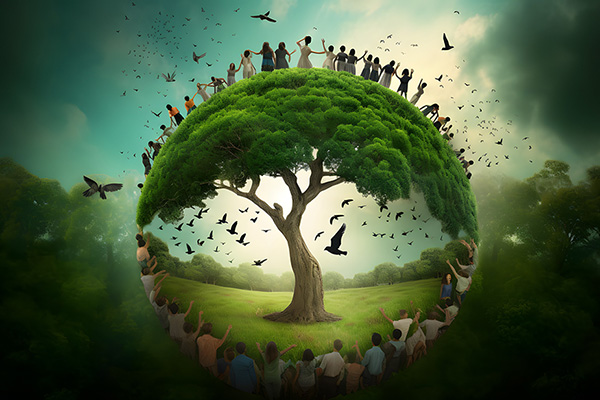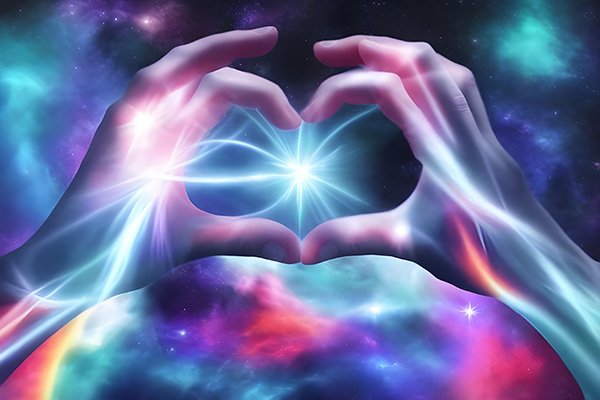ancestors
The Modern Practice Of Spiritual Healing
 In a world driven by science and technology, the value of our spiritual health is rarely recognized or appreciated these days, yet it is an essential aspect of our holistic health and well-being.
In a world driven by science and technology, the value of our spiritual health is rarely recognized or appreciated these days, yet it is an essential aspect of our holistic health and well-being.
The truth is that spiritual healing has been practiced since the beginning of time to promote physical, emotional, mental and spiritual well-being. Our ancestors were much wiser in this regard. They had a holistic view of health and wellness that not only focused on the physical and mental, but also honored the spiritual or metaphysical aspects of our existence.
In ancient Egypt, for example, illness was treated as a battle between good and evil, and magical remedies were used in addition to herbal medicines. In ancient Greece, holism underpinned everything, and the soul, mind, and body were considered one.
In Traditional Chinese Medicine, a holistic system practiced for at least 23 centuries, healing is achieved by balancing the yin-yang life force energies that permeate everything in the universe. In the indigenous healing traditions of Native America, holistic health is represented by the four quadrants of the ‘medicine wheel’ or ‘sacred circle,’ namely the physical, emotional, mental, and spiritual states of being.
In Christianity, spiritual healing is documented with many references to the healing power of faith and prayer. The Bible also refers to the spiritual gift of healing, and there are several accounts of Jesus performing miraculous healings. In Hinduism, Ayurveda is a five-thousand-year-old Vedic system of medicine that seeks to restore the balance between the body, mind, and spirit.
Dealing With Ancestral Karmic Debt
 When a loved one crosses over, they transcend this dimension to enter the next. In the spirit dimension we revert from human ego consciousness back to universal consciousness, and our awareness is no longer limited by time and space.
When a loved one crosses over, they transcend this dimension to enter the next. In the spirit dimension we revert from human ego consciousness back to universal consciousness, and our awareness is no longer limited by time and space.
I like to think of our constantly evolving soul or spirit as ‘cookie dough.’ When we cross over and revert to the broader perspective of universal consciousness, our soul energy is like a ball of dough that has been proofing for a lifetime.
As the Universe, or the Divine Cookie-Maker, rolls out the dough of our returning soul, there will be some karmic ‘lumps.’ These lumps are the unwise choices, mistakes, transgressions, missed opportunities, failures, crimes, and sins for which we didn’t make amends during this lifetime. It then becomes our karmic debt.
Some of these karmic debts go back many generations and have become part of the ancestral legacy of our soul family. It has sometimes dire consequences for everyone we are spiritually connected to in this life and the next. It becomes a shared responsibility for the entire soul family, for which someone needs to step up at some point to break the cycle.
Making amends and striving towards karmic healing is therefore not just something we do for our own sake, but also for those that came before us, and especially for those who will come after us.
Our ancestors on the Other Side are also continually striving to resolve their karmic debts, and for this they may need our help and support. If we hold them, or ourselves, in a state of unforgiveness, they cannot move forward with their karmic healing, or the next stages of their soul journey.
There Is More To Astrology Than Horoscopes!
 Astrology is an ancient, complex metaphysical tradition that originated over 4000 years ago in Mesopotamia. Yes, indeed! Old Babylonia was its birthplace, not Harry Potter’s Hogwarts School of Witchcraft and Wizardry. Neither was it concocted by an enterprising editor of some trendy newspaper or magazine.
Astrology is an ancient, complex metaphysical tradition that originated over 4000 years ago in Mesopotamia. Yes, indeed! Old Babylonia was its birthplace, not Harry Potter’s Hogwarts School of Witchcraft and Wizardry. Neither was it concocted by an enterprising editor of some trendy newspaper or magazine.
Actually, the first horoscope in the modern press is credited to the British astrologer Richard Harold Naylor who wrote a horoscope for the newly born Princess Margaret, titled What The Stars Foretell For The New Princess. It was published three days after her birth on August 24, 1930 in the Sunday Express weekly newspaper. It was so popular with readers that he was asked to write more horoscopes for the publication.
The sun sign astrology we see in modern day horoscopes was not originally intended for the individual, but it has become a useful gateway to entice people into a deeper exploration of astrology. Nothing wrong with a little ‘cheese for the mice,’ as long as we bear in mind that true astrology does not exclusively revolve around our birth sun sign.
Our sun sign is only one letter of the astrological alphabet, albeit a highly significant letter. The other planets in our natal chart do view our sun as the center of things, but the cosmos and our individual lives contain so much more.
The layered complexity of a nativity, a client’s individual birth story crystallized in an exact moment of time and place, is a story as rich as the history that birthed it. Ancient Babylonia carried the first seeds of the western, tropical system of astrology that many of us practice today.



